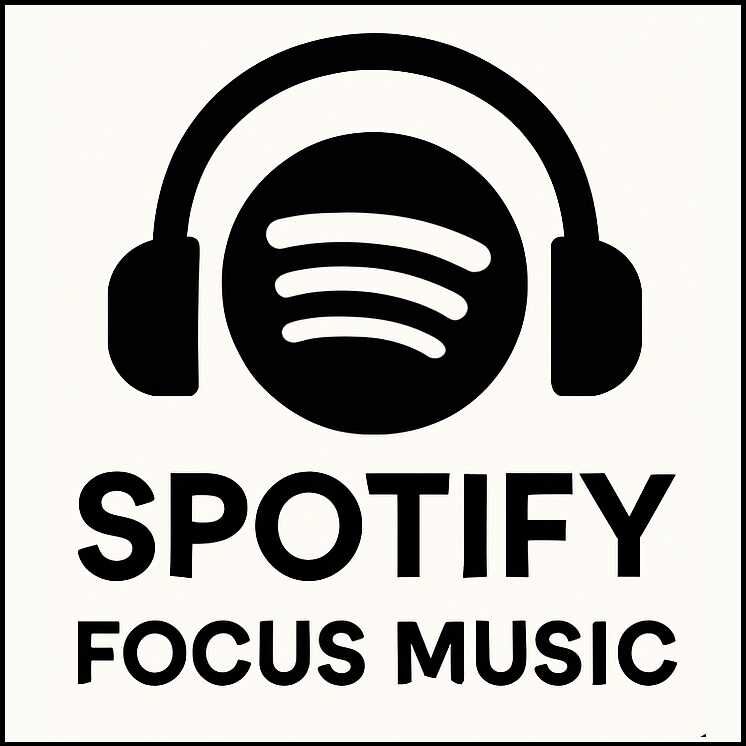“Music is the shortest path from the ears to the soul, but when chosen wisely, it goes even deeper — into the heart of focus.”
Introduction: Silence Isn’t Always Golden
The world is full of noise — both outside and within. When a student, a programmer, a writer, or a researcher sits down to work, the first thing they need is clarity. But more often, chaos arrives instead: thoughts swarm, the body feels restless, and the world tempts with a million distractions.
This is where a unique kind of music enters — focus music. It doesn’t demand your attention, it collects it. It doesn’t amplify emotion — it clears the mental fog, like a Zen monk wiping dust from the mirror of consciousness.
Chapter 1: The History and Science of Music and Focus
1.1. Origins of Interest
In ancient China and India, sages noticed how sound influenced mental states. Mantras, rhythmic patterns, and monotonous chants were used for meditation, study, and spiritual discipline.
But scientific inquiry into the cognitive effects of music began in the 20th century. Researchers like Anna Grünberg and Hans Selye explored how external stimuli, including sound, impacted stress and focus.
In the 1990s, the “Mozart effect” became a cultural phenomenon. Brief exposure to Mozart’s music was said to improve spatial-temporal reasoning. While later studies questioned this, the core insight held firm: music can shape the way we think.
1.2. Alpha Waves and Neuroscience
With EEG (electroencephalography), scientists observed that music of certain tempo and tonality stimulates alpha brain waves (8–12 Hz) — the calm alertness ideal for learning and retaining information.
This led to the concept of brainwave entrainment — the synchronization of neural rhythms with external pulses. Techniques like binaural beats and isochronic tones aim to gently pull the brain into optimal frequency ranges for studying.
Chapter 2: Key Genres of Focus Music
2.1. Ambient: Music Like Air
Ambient music, born in the 1970s from the work of Brian Eno, is music without melody. Long, fluid layers of sound create a calm sonic environment. It’s often used for meditation — but just as often for study.
Ambient is silence, made audible.
There’s no rhythm to distract you, no vocals to decode — only an atmosphere that keeps you company without ever interrupting your thought process.
2.2. Lo-fi Hip-Hop: Urban Stillness
Lo-fi stands for low fidelity — sound with imperfections: vinyl crackle, muffled drums, warm harmonies. This genre evokes a feeling of coziness and solitude.
Popularized by YouTube streams like lofi girl, it’s ideal for tasks requiring steady attention in a casual setting — writing, note-taking, or deep reading.
2.3. Classical: Harmony That Has Withstood Time
Classical music, especially from the Baroque era (Bach, Vivaldi), offers rhythmic symmetry and emotional neutrality. It guides your mind rather than capturing it. It works especially well for structured analytical tasks.
2.4. Future Garage / Downtempo: Urban Melancholy
Genres like future garage and downtempo offer minimalist beats, subtle bass textures, and emotional restraint. These styles are particularly effective at night or during long focus sessions — when the world falls silent and only the work remains.
They evoke solitude, but not loneliness — the kind of inner quiet that supports intellectual flow.
2.5. Binaural Beats & Brainwave Music
These forms are engineered specifically to affect mental states. In binaural beats, each ear receives a slightly different frequency (e.g., 400 Hz in one, 410 Hz in the other). The brain perceives the 10 Hz difference and begins to synchronize with it — often aligning with alpha or theta wave states.
While more technical and clinical, these tools are widely used in apps for study, meditation, and sleep.
Chapter 3: Traits of Effective Focus Music
To be genuinely helpful during study, music should follow several key rules:
-
No vocals. Lyrics activate the brain’s language centers, clashing with tasks like reading or writing.
-
Steady tempo. Ideally 50–80 BPM — mimicking the relaxed heart rate of a calm, focused state.
-
Repetitive phrasing. Looped phrases induce a sense of ritual and immersion.
-
Harmonic balance. Major or neutral modes are preferred. Minor keys only if emotional depth is needed.
-
Low dynamic range. Sudden volume changes disrupt focus. The best focus music whispers — it doesn’t shout.
Chapter 4: When and Why to Use Focus Music
4.1. Absorbing New Information
Music that enhances alpha wave activity can improve the encoding of new material. Baroque classical music or ambient tracks with binaural tones are excellent here.
4.2. Deep Work
For complex tasks that require sustained focus (writing, coding, creative work), styles like Future Garage, Lo-fi, or instrumental ambient offer consistent mental scaffolding.
4.3. Reviewing or Exam Prep
During review sessions, stability is key. Lo-fi or solo piano instrumentals provide a comfortable sound bed that encourages memory recall without distraction.
4.4. Technical Tasks
Spreadsheet work, research, or systematizing information benefits from music that’s rhythmically predictable and harmonically neutral — such as chill downtempo or soft electronic textures.
Chapter 5: Common Myths and Missteps
-
“I study better with my favorite music.” A myth. Favorite songs stimulate emotional and memory networks — which can distract rather than support cognitive focus.
-
“Music doesn’t work for me.” Maybe not the type you tried. If lo-fi doesn’t help, ambient might. If ambient is too soft, try minimalist electronic.
-
“Silence is always best.” Not for everyone. For those with anxiety or sensitivity to ambient distractions, background music can mask intrusive noise and create a sense of calm control.
Chapter 6: Crafting Your Own Study Ritual with Music
-
Pair music with a specific task. Use the same genre or playlist each time you do a certain type of work. Your brain will start to associate the sounds with that state of focus.
-
Use headphones. This reduces environmental distractions and helps you enter a personal sound bubble.
-
Avoid shuffle. Unpredictable transitions break concentration. Instead, choose long mixes or curated playlists.
-
Time your sessions. Use the length of a track or mix as a focus timer (Pomodoro style). Work until the music ends, then take a break.
Conclusion: Music as a Mind Compass
In the end, focus music isn’t magic — it’s a subtle nudge. It’s not the star of your study session; it’s the stage crew, adjusting the lights and clearing the air. It works not by overpowering thought, but by making space for it.
When chosen mindfully, music becomes your co-pilot: navigating you through distraction, anchoring you in the moment, and leading you — gently, rhythmically — toward deeper understanding.
“Focus is not the absence of noise, but the presence of intention. And sometimes, intention hums softly in a minor chord.”



